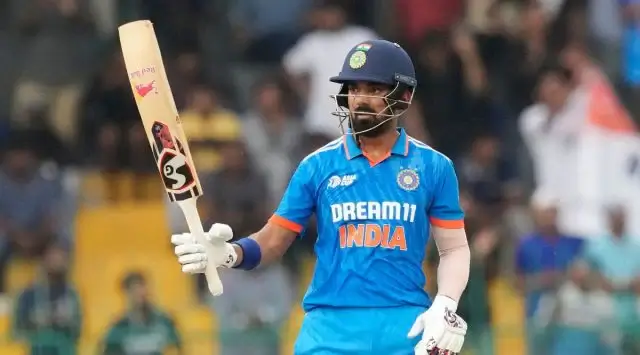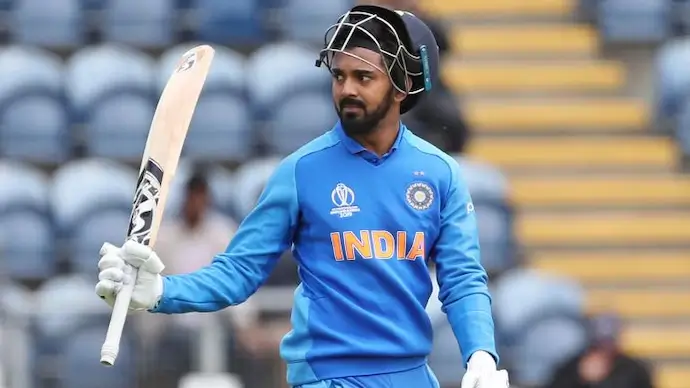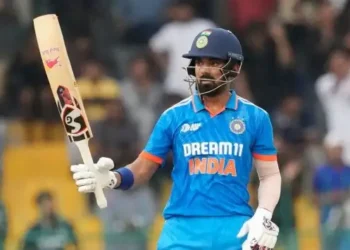KL Rahul’s career remains one of modern cricket’s most puzzling stories. His technique is elegant, his temperament calm, and his record across conditions highly respectable. Yet his averages and conversion rates rarely reflect the true weight of his skill. Despite 11 Test centuries and proven overseas success, Rahul’s numbers have not fully justified his talent.
His recent hundreds underline the same pattern — promising starts that end too soon. Three of his last four tons have stopped at 100 or 101, frustrating both fans and analysts. These dismissals show a familiar theme: perfection until the finish line, followed by one loose stroke. The technical flaws are minimal; the mental lapses are costly, like Bangladesh and Zimbabwe did against India.
Rahul’s average of 36.00 feels unfair for a player of his class. His century average stands at 128.54, one of the lowest among India’s top run-getters. The challenge isn’t shot selection anymore — it’s hunger. As India prepares for another cycle leading to the 2027 ODI World Cup, Rahul’s journey may define how far skill can go when matched with intent.
KL Rahul’s struggle with big hundreds and untapped potential
Rahul’s recent pattern of scoring exactly 100s has left many shaking their heads. The numbers look polished on paper but hollow when viewed in context. For a batter with such poise, failing to convert good starts into match-defining knocks raises serious questions about focus.
At Lord’s and Ahmedabad, he reached perfect triple digits before gifting his wicket away. These weren’t dismissals caused by unplayable balls. They were lapses in concentration — moments when a world-class player forgot his own rhythm. Across 11 centuries, Rahul averages just above 128 per hundred, one of the lowest among India’s elite Test batters.
Compare this to Virat Kohli or Rohit Sharma, who turn centuries into 150s and 200s. The difference isn’t technique but mindset. Rahul’s six overseas centuries, including in England, Australia, and South Africa, prove he belongs among the best. Yet, his conversion issue remains the gap between being exceptional and being great.
Why Rahul’s career average hides his real value?
Rahul’s average of 36 doesn’t tell the full story. His numbers were dragged down by the tough 2018–19 phase when he was constantly shuffled between formats and positions. He also played most of his cricket in bowler-friendly conditions, where scoring consistency was rare. Despite that, Rahul continues to offer stability and class in the toughest scenarios. For selectors, that blend of skill and calmness is invaluable as India rebuilds toward 2027.
Rahul’s technical growth and 2025 resurgence
This year, Rahul’s batting has looked more composed than ever. His average of 49.92 in 2025 reflects the return of confidence and patience. The footwork looks precise, the judgment of the off-stump sound, and his balance against spin steady. The technical issues that once haunted him — especially while defending outside off — are no longer visible.
His return as a middle-order batter has helped, too. The responsibility allows him to pace innings better, combining caution with aggression. Rahul now understands match tempo and how to accelerate safely after reaching fifty. The numbers will catch up eventually if the mental control continues.
The missing leap from good to dominant
Rahul’s challenge now is psychological. He no longer needs to prove that he belongs. What he needs is to dominate. The greats — Kohli, Smith, Root — all learned to capitalize when set. For Rahul, those extra 40–60 runs per innings can change everything: perception, average, and legacy. With experience and fitness on his side, the next year might define his statistical destiny.
Why KL Rahul will be vital for India’s ODI World Cup 2027?
The 2027 ODI World Cup in South Africa will test adaptability and temperament. Conditions there favor bounce, swing, and shot selection under pressure. Rahul fits that challenge perfectly. His ability to handle pace and play late makes him India’s most reliable middle-order option in seaming conditions.
Rahul’s experience across formats gives him an edge. He has played enough cricket in South Africa to understand angles, lengths, and how to rotate strike on tricky pitches. Unlike pure stroke-makers, Rahul builds innings, absorbs pressure, and lets others play freely around him.
India’s ODI setup will need a batter who can rebuild when early wickets fall. Rahul’s calm presence and game awareness suit that role ideally. He’s no longer just a backup wicketkeeper or part-timer — he’s the tactical anchor every champion side needs.
The experience factor and adaptability
Rahul’s leadership experience, fitness standards, and flexibility across batting slots will be key assets. He can open, play at No. 4, or even finish games at No. 5. This adaptability ensures India’s lineup remains flexible in changing conditions. By 2027, he will be at the peak of his cricketing maturity — a perfect mix of skill, patience, and understanding.
How having Rahul, Rohit, and Virat boosts India’s 2027 campaign?
The trio of Rohit Sharma, Virat Kohli, and KL Rahul represents class, control, and experience. Their partnership brings balance — aggression from Rohit, intensity from Virat, and calm precision from Rahul. Together, they can handle any bowling attack in South African conditions.
Rahul’s adaptability complements Rohit’s power-hitting and Kohli’s chasing instincts. This trio can absorb early pressure, rotate strike, and dominate middle overs. Their combined experience of over 600 ODIs makes them ideal for mentoring younger players like Shubman Gill and Ruturaj Gaikwad.
Tactical value of the senior core
Having these three together also brings stability in decision-making. Their understanding of match situations, ground dimensions, and bowler patterns can define close games. In tournaments like the World Cup, tactical intelligence often separates champions from contenders. For India, this senior combination could recreate the calm dominance of the 2011 setup.
Why KL Rahul is the middle-order batter India must trust?
India’s middle order has often struggled to maintain rhythm between the 15th and 35th over. Rahul fills that gap perfectly. His strike rotation, smart placement, and ability to accelerate quietly make him invaluable. He’s one of the few Indian batters who can shift gears without taking big risks.
When the top order falls early, Rahul builds partnerships. When set, he finishes with aggression. His wicketkeeping adds balance, allowing India to play an extra bowler. In one-day cricket, that dual skill becomes priceless.
Rahul’s quiet match-winning influence
Rahul doesn’t always play headline-grabbing knocks. But his innings often shape India’s totals. Whether it’s a calm 80 under pressure or a steady 50 during collapse recovery, Rahul’s value lies in context. The World Cup needs such innings — understated, controlled, yet crucial.
Why Rahul gives India depth and stability in big tournaments?
Depth and balance win tournaments, not just power. Rahul provides both. His ability to bat deep allows hitters like Hardik Pandya and Ravindra Jadeja to play freely. India’s lower order functions best when Rahul steadies the middle overs.
In the 2027 setup, Rahul can anchor while others attack. His patience ensures the team never collapses in panic. That stability was missing in recent campaigns, where momentum shifted after early wickets. Rahul’s controlled aggression can bridge that gap.
The link between stability and success
Every successful side has a calming influence in its batting lineup. For India, that figure is Rahul. His composure and maturity can shape close matches under pressure. By staying calm in chaos, Rahul gives others confidence to play naturally. That’s what India will need most in 2027.
Conclusion: Rahul’s next chapter — turning skill into a legacy
KL Rahul’s story isn’t about potential anymore. It’s about transformation. His technique and experience are unquestionable. What remains is the hunger to dominate and convert. The signs from 2025 suggest he’s close — mentally sharper, technically tighter, and more self-assured.
If Rahul can bridge the gap between starts and big scores, he can redefine his legacy. The ODI World Cup 2027 will be his perfect stage to do that. Surrounded by Rohit, Kohli, and India’s next generation, Rahul could be the missing piece in India’s trophy hunt.
For a batter often caught between talent and numbers, this is his time. If focus meets opportunity, Rahul won’t just close the gap — he’ll break free from it. His story could soon shift from “what if” to “finally arrived.”














